
10 minute read
HOMEtown Reflections
Curbside pump at Hudson Essex service station, 3rd Avenue at 23rd Street, 1928.
The roaring 20's HOMEtown Reflections Jeff O’Brien
Advertisement
The Roaring 20's, we call them. The Jazz Age. From flappers to F. Scott Fitzgerald, from the Charleston to Charlie Chaplin, images of the 1920s pervade our popular culture even now, a century later.
It was a decade of prosperit y and excess. A time of extremes, when the economy lurched from boom to bust and prohibition was on everyone's lips. But it was also a period of peace, prosperity, innovation and excitement. When, for a fleeting moment, the world danced in the sunlight.
An Inauspicious Start
The 1920s started poorly. The years just after the war had been marked by bitter
Photo Credit: Local History Room - Saskatoon Public Library - LH 540
political and economic unrest as the country struggled to return to normal. Returning soldiers were hit the hardest. Unemployment skyrocketed, reaching crisis levels in 1921. There was a housing shortage: accommodations were poor, rents were high, and overcrowding was rampant, with reports in Saskatoon of five or six families crammed into a single house. By 1920, food and clothing prices were double what they had been in 1914, but wages still lagged far behind. It was a recipe for chaos.
A Boom Begins
But as the decade progressed, things began to sort themselves out. By 1926,
Saskatoon was booming again. The population increased by 70 per cent, from 25,000 to 43,000 (mostly in the last half of the decade) making us the fastest growing city in Western Canada.
The construction industry raced to keep up. The value of building permits issued by the city increased from less than a million dollars in 1921 to nearly six million in each of 1928-1930, approaching the records set in the pre-war boom years.
We got ten new schools, including three high schools, a new public library, and a brand-new police station. Downtown construction projects included the elegant new Eaton’s building on Third Avenue (nowadays the offices of the Public School Board) while across the river a flurry of construction saw
Unveiling of the cenotaph war memorial on 21st Street, 1929.
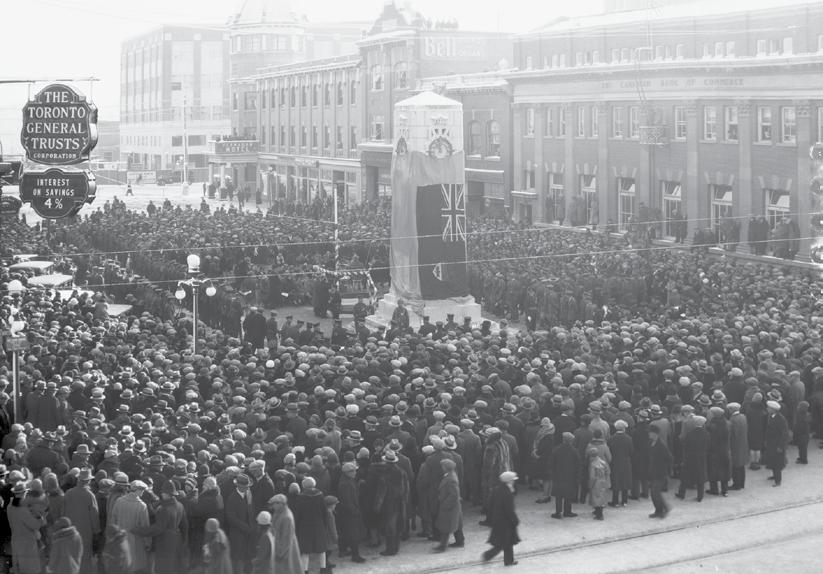
half a dozen new buildings go up at the University. Meanwhile, both City and St. Paul’s hospitals underwent significant expansions and a completely new hospital, Photo Credit: Local History Room - Saskatoon Public Library - A 275
the sprawling Saskatoon Sanatorium was built at the south end of Avenue K.
Public health made huge strides in the 1920s, including the addition of a chlorination plant at the municipal waterworks, the mandatory pasteurization of milk, and vaccinations for diphtheria and scarlet fever.
In 1923, there were

nearly 3,000 “unmodern” hou ses in Saskatoon, homes without sewer or running water. These accounted for more than half the total housing stock. With the city poised to add thousands of new homes to accommodate its ballooning population, the Medical Health Officer declared all-out war on the backyard privy. In the end, an additional 3,000 “modern” houses were built during the 1920s, most of them after 1925. For the first time, homes with flush toilets outnumbered those without.
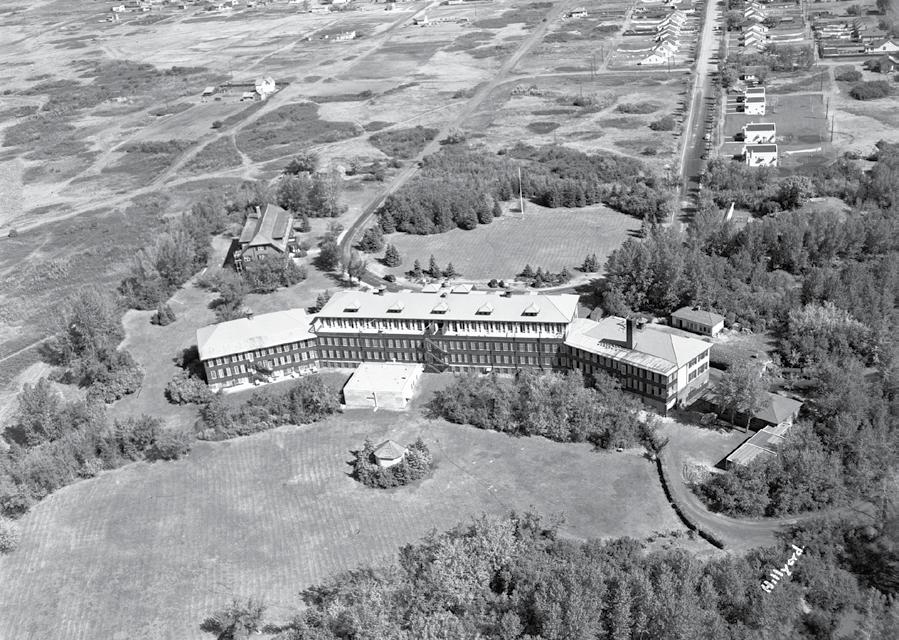
The Long Dry Spell
One of the enduring images o f the 1920s is prohibition. But while the newspaper in Saskatoon frequently ran lurid articles about gangsters and gun molls, those things m o s t l y h a p p e n e d somewhere else.
Not to say that we didn’t have bootleggers and homebrew, because we certainly did. But prohibition was a lot less colourful here than it was south of the border. It also lasted longer. The Saskatchewan government closed the bars in 1915. They didn’t re-open until 1935. Worse, from 1918-1925, even the government-run liquor stores were closed. But Saskatoon was never truly dry. Drinking was allowed in the privacy of one’s own home and alcohol was generally available, including by prescription from your local druggist.
The hotel bars—ostensibly limited to selling soda pop and other non-alcoholic beverages—could generally be relied on to have something
During Prohibition, Saskatoon hotels were frequently raided in search of bootleg liquor.
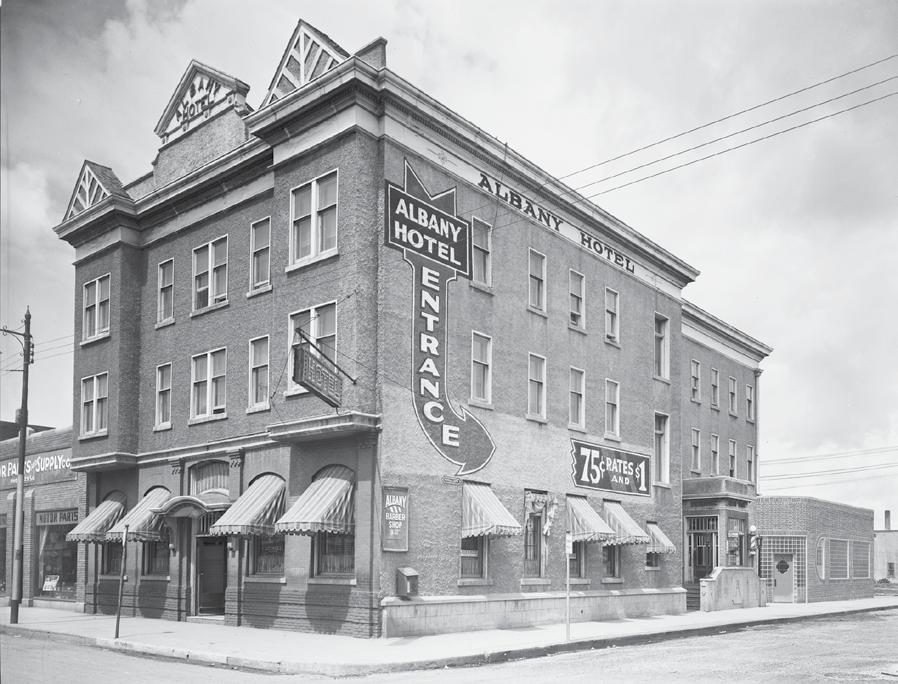
Photo Credit: Local History Room - Saskatoon Public Library - B 1696
more palatable stashed behind the counter, and bootleggers frequently ran speakeasies out of hotel rooms.
This kept law enforcement busy. The owner of the Queen’s Hotel, for example, was arrested several times, once for selling liquor out of a booth at the Exhibition. Still, most of what passed for prohibition here in the 1920s seems to have been pretty low-key. The Klan
Not a moment of pride for the city or province, thousands of residents were full-fledged members of the Ku Klux Klan (KKK) throughout Saskatchewan. Photo Credit: Local History Room - Saskatoon Public Library - A 1753
Riding a wave of anti-immigrant sentiment, the Klan moved into Saskatchewan in around 1927. At its height, it boasted some 25,000 members, many of were said to be politically very well-connected.
On the Move The number of cars in Saskatoon grew enormously in the 1920s. For a little while, we even had an automobile factory out on 11 th Street West. Directories for 1930 showed 13 car dealerships, 30 gas stations, and a raft of related shops and industries. The automobile was big business, even here. Despite this, public transit was still the cheapest and most reliable way to get from hither to yon, and the streetcars of the Saskatoon Municipal Railway system were rarely empty.
If the automobile was big in the ‘20s, aviation was even bigger. The aeroplane had come of age during the war, and the aircraft of the 1920s were a far cry from the clumsy, underpowered kites of pre-war days. New records were being set and old ones broken, and newspaper audiences thrilled to breathless stories about aviation celebrities like Charles Lindbergh and Amelia Earhart, and their latest, most outrageous “hops.”
Lofty Ambitions
Aviation came to Saskatoon in 1919 when a wartime flight instructor named Stan McClelland built a hangar at the west end of 22 nd Street. The prospects for commercial aviation here were still rather thin in those days, and despite plans for passenger and delivery services, he seems to have made most of his money as an instructor and travelling barnstormer. A more unusual enterprise was the Ken
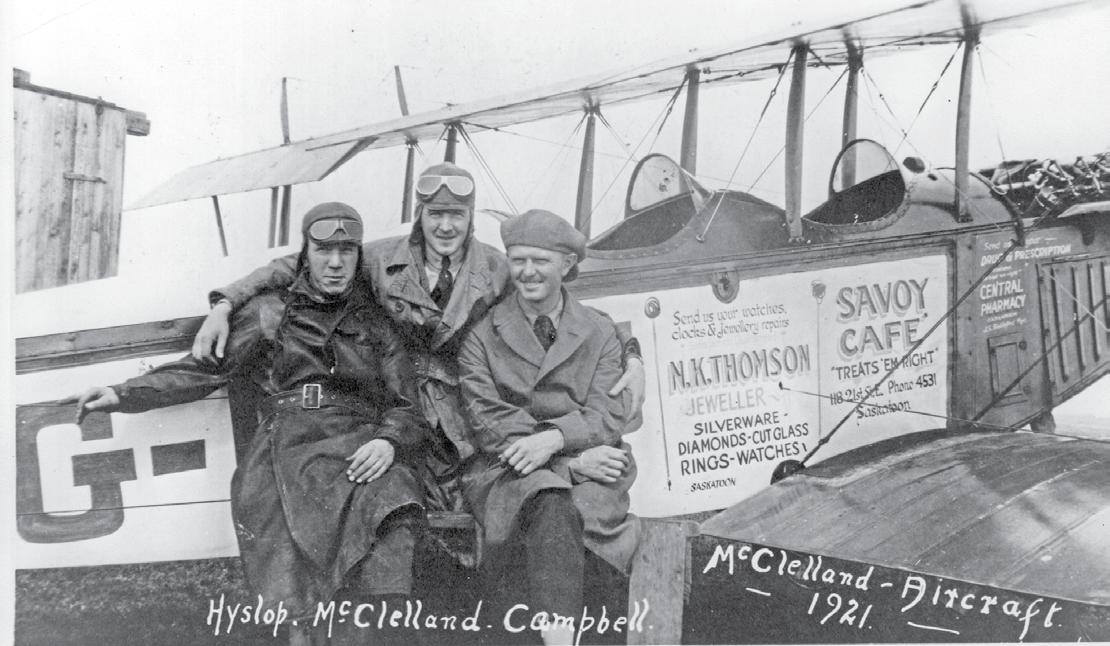
Traffic accident on Lorne Avenue, 1928.
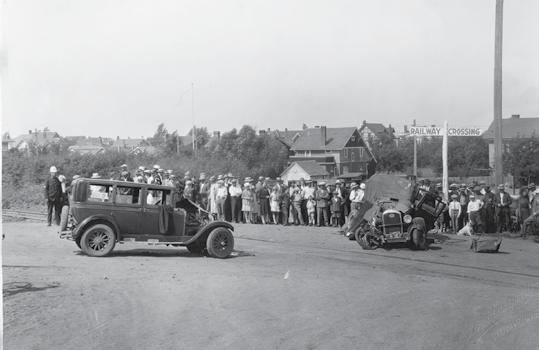
Photo Credit: Local History Room - Saskatoon Public Library - LH 4477-1

A student at the Ken Wah School of Aviation, 1921.
Photo Credit: Local History Room - Saskatoon Public Library - PH 96-80-16
Stan McClelland, 1921.
Wah School of Aviation, which trained pilots for the Chinese Republican Flying Corps out of a hangar north of Mayfair.
Saskatoon’s first airport was the Municipal Air Harbour, which opened in 1928 in a field west of Avenue A just north of 51 st Street, and was operated by the local flying club under contract with the city. By 1929, the Saskatoon Aero Club was the second largest flying club in Canada and included our own aerial celebrity, Nellie Carson, the first licensed woman pilot in Saskatchewan, who set an aviation record in 1930 by reaching a height of 16,000 feet without an oxygen mask.
Hitting the Airwaves
But some of the biggest changes of the 1920s were in the entertainment world, with the arrival of commercial radio and of “talkies”— movies with sound.
Saskatoon’s first successful commercial radio station was CFQC, which went on the air on July 15, 1923. By 1925, there were four stations here, including the Bedford Road Collegiate Radio Club, which broadcast on Monday and Saturday nights as “Saskatoon’s Snappy Station!” In those days, everyone used the same frequency, so stations had to coordinate their broadcast schedules.
The 1920s was also the golden age of movie theatres. In Saskatoon in 1929, the event of the year was the construction of the Capitol Theatre, the grandest, most beautiful, most expensive
"Gun Molls" - Saskatoon style, ca. 1926.

Photo Credit: Local History Room - Saskatoon Public Library - PH-95-17-7
A film crew on 19th Street downtown, Saskatoon's "Chinatown" district in the 1920s.
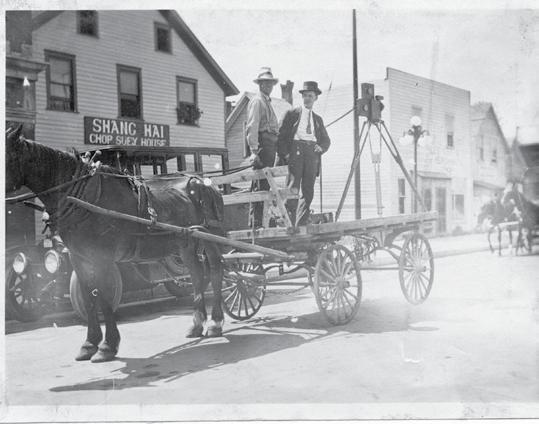
Photo Credit: Local History Room - Saskatoon Public Library - LH 4162
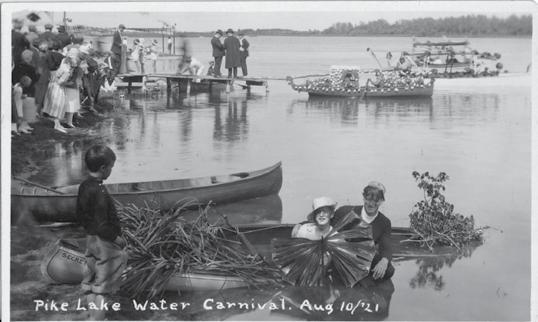

Saskatoon's palatial Capitol Theatre.

Photo Credit: Local History Room - Saskatoon Public Library - A 2051
theatre in the city’s history, and the first one built especially for the newest in high-tech movie excitement: “talking pictures.”
The Capitol opened its doors for the first time on May 11, 1929. Thousands lined up that weekend to see Close Harmony, starring Charles “Buddy” Rogers and Nancy Carroll, and to hear them actually talk and sing.
The newspaper reviewer was as enthusiastic about the magnificence of the theatre, with its thickly carpeted foyer “so reminiscent of the grand opera houses of Europe,” as he was about the talking picture, “this new art of the entertainment world.”
Out On the Town By 1929, Saskatoon had 50 restaurants and six theatres, typically showing a mixture of live theatre, dance, comedy and movies. On the weekends there were dances and cabarets in places like Campbell’s Palm Room, the Labour Temple, or the Art Academy. There was a thriving "Chinatown" district downtown along 19th Street. There were all sorts of clubs to join, while lectures and political meetings were widely advertised and well attended. In the summer, nearby resorts like Manitou Beach were hugely popular, with packed excursion trains leaving every weekend. And if you couldn’t get to Manitou, there were always hijinks a-plenty at the annual Pike Lake Water Carnival, or down at Riversdale Pool, the city’s first outdoor swimming pool, which opened in 1924.
Indeed, despite its failings —and we certainly had them—Saskatoon in the 1920s seems to have found its happy place. A 1929 newspaper advertisement was talking about the Capitol Theatre, but might just as well have been talking about Saskatoon itself, when it called it “so beautiful you’ll be content to do nothing but take in its beauty and call it money well spent.”
Less big-box. More friendly service and know-how. Less big-box. More friendly service and know-how.
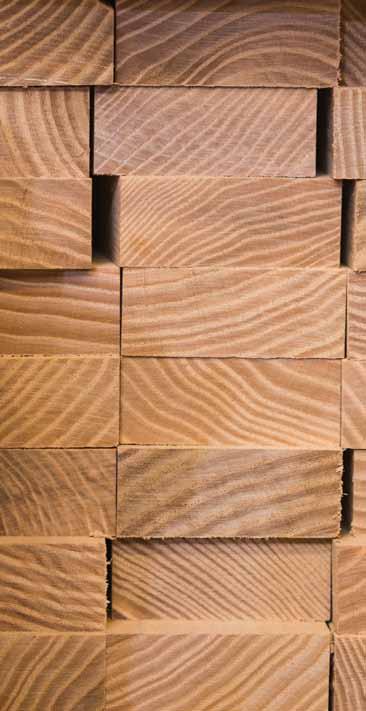
For more than 50 years, Adams Lumber has offered quality lumber and building supplies, expert advice, competitive prices, and outstanding customer service. All from our family-owned location in south central Saskatoon.
Visit us for a wide range of products and expertise: Free project estimates Replacement windows and doors Aluminum deck railings Garage, fencing, decking packages Home and cottage packages Complete lumber and building supplies
Making Your Memories into timeless art



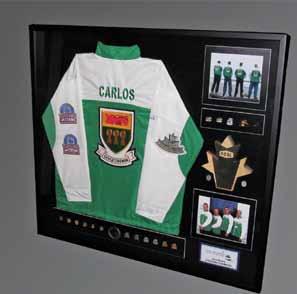
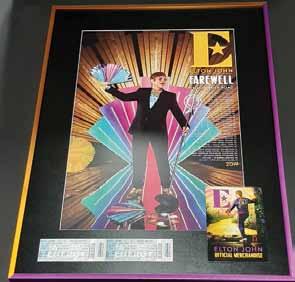
Since 1978, our friendly, knowledgeable and passionate team has offered the best custom framing and specialty printing experience in Saskatoon. We love what we do and it shows.
306-373-1171
121 Jessop Avenue









